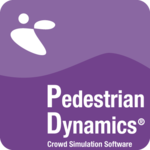Description

Arena Simulation

Simio
Comprehensive Overview: Arena Simulation vs Simio
Arena Simulation and Simio are two prominent simulation software tools used for modeling, analyzing, visualizing, and optimizing processes across a range of industries. Below is a comprehensive overview of these two products:
Arena Simulation
a) Primary Functions and Target Markets:
-
Primary Functions:
- Arena Simulation is used for discrete event simulation, allowing users to model complex processes to assess their performance under various scenarios.
- It provides capabilities for process flow visualization, statistical analysis, and optimization of systems.
- Users can build a simulation model using a flowchart-style interface and tweak model parameters to examine outcomes under different conditions.
-
Target Markets:
- Manufacturing: Arena is widely used for modeling assembly lines, material handling, and resource allocation.
- Logistics and Supply Chain: For optimizing inventory levels, transportation logistics, and warehouse operations.
- Healthcare: Used for modeling patient flow, resource scheduling, and operational efficiency in hospitals and clinics.
- Service Operations: Airports, banks, and call centers use Arena to optimize queue management and service delivery.
b) Market Share and User Base:
- Arena Simulation is a mature product with a long history in the simulation space, which has contributed to a solid market share within industries like manufacturing and logistics.
- Its user base is broad, spanning academics, engineers, and operational managers who rely on discrete event simulation.
c) Key Differentiating Factors:
- Long-standing presence in the market, providing a wealth of case studies, standardized practices, and a large support community.
- Known for its robustness in handling large-scale complex systems with proven algorithms.
Simio
a) Primary Functions and Target Markets:
-
Primary Functions:
- Simio offers 3D object-oriented modeling for both discrete and continuous systems, enhancing visualization and detail within simulations.
- Combines simulation with scheduling, a unique feature that crosses the boundary into operations management.
- Users can design simulations using drag-and-drop, with a strong focus on graphical user experience and integration with 3D environments.
-
Target Markets:
- Similar to Arena, Simio serves manufacturing, healthcare, and logistics sectors, but with additional traction in areas requiring intricate integration of simulation with scheduling.
- Engineering and education sectors leverage Simio for teaching complex systems modeling due to its modern interface and functionality.
b) Market Share and User Base:
- Simio is newer compared to Arena but has gained significant attention for its modern interface and capabilities, leading to rapid adoption, especially in sectors where visualization and real-time integration are prioritized.
- It is popular among users who need advanced simulation integrated with scheduling, which may attract new academic and industrial users looking for cutting-edge technology.
c) Key Differentiating Factors:
- The integration of advanced scheduling functionalities sets Simio apart, making it highly effective for industries requiring detailed operational planning.
- Advanced 3D modeling and graphics support offer enhanced visual insight, beneficial for presentations and stakeholder communications.
- A more modern UI compared to Arena might appeal to newer generations of users.
Conclusion
Both Arena and Simio serve overlapping markets but differ significantly in user experience and specific functionalities. Arena holds a strong legacy reputation with a robust user base, while Simio attracts users through its modern design and integration of simulation and scheduling. Businesses often choose between them based on specific needs like legacy integration, ease of use, or operational flexibility.
Contact Info

Year founded :
Not Available
+1 412-375-4700
Not Available
United States
Not Available

Year founded :
2023
Not Available
Not Available
France
Not Available
Feature Similarity Breakdown: Arena Simulation, Simio
When comparing Arena Simulation and Simio, both prominent tools in the field of simulation modeling, it's important to note their similarities, differences in user interfaces, and any unique features each one may have. Here's a breakdown:
a) Core Features in Common:
-
Discrete Event Simulation (DES):
- Both Arena and Simio primarily focus on discrete event simulation, allowing users to model events that occur at distinct points in time.
-
Graphical Model Building:
- Both platforms offer graphical, drag-and-drop functionalities to construct models using pre-built elements, which helps in ease of modeling and user understanding.
-
Customization and Flexibility:
- Arena and Simio provide customizability through scripting and programming capabilities (Arena utilizes VBA and Simio allows for custom code within its environment).
-
Statistical Analysis:
- They offer tools for comprehensive statistical analysis of model outputs, including summary statistics, histograms, and statistical fit for input data.
-
Animation and Visualization:
- Both tools provide animation features to visualize the simulation, offering insights into the flow and operations being modeled.
-
Integration Capabilities:
- Arenalesimul provides some integration with databases and external data sources, supporting input and output data handling.
b) User Interface Comparison:
-
Arena Simulation:
- Arena has an interface that is robust but can be daunting for beginners. It relies heavily on a traditional Windows interface with toolbars and menus. Its modeling approach involves the use of modules and connections, reminiscent of flowcharts.
-
Simio:
- Simio offers a more modern and user-friendly interface with a strong emphasis on object-oriented modeling. Its use of 3D objects and streamlined navigation makes it more intuitive, especially for new users or those looking for a more visually engaging experience.
c) Unique Features:
-
Arena Simulation:
- Legacy and Industry Acceptance: Arena has been used widely for many years, leading to a vast community and extensive documentation and case studies, which can be beneficial for specific industries looking for proven solutions.
- Specialist in Manufacturing and Logistics: It has specific modules and optimization capabilities catering heavily to these domains.
-
Simio:
- Object Orientation and Process Logic: Simio supports object-oriented modeling more directly, which can allow for more natural and reusable model designs.
- 3D Modeling and Animation: Simio excels in offering high-quality 3D animation, providing a deeper level of visualization.
- Airport and Transportation Focus: Simio has features that cater well to complex transportation and airport simulations, integrating vehicle and schedule complexities in a user-friendly way.
- Future Simulation (Risk-Based Planning): One of Simio's distinguishing features is its ability to conduct risk analysis and plan for future scenarios through built-in risk-based planning and scheduling functionalities.
In summary, while both Arena and Simio offer powerful discrete event simulation capabilities, they differ significantly in terms of user interface and targeted unique features. Arena appeals to seasoned professionals in manufacturing with its traditional interface and robust community support, whereas Simio offers a modern, intuitive environment appealing to industries requiring detailed 3D visualization and risk-based planning.
Features

Not Available

Not Available
Best Fit Use Cases: Arena Simulation, Simio
Arena Simulation and Simio are both powerful tools for simulation modeling but are preferred for different types of use cases and industries. Here's a detailed description of their best fit use cases:
Arena Simulation
a) For what types of businesses or projects is Arena Simulation the best choice?
Arena Simulation is often chosen for its robust modeling capabilities and extensive history of use in industrial engineering applications. It is particularly well-suited for:
-
Manufacturing Operations: Arena excels in modeling discrete event systems commonly found in manufacturing processes. It's ideal for analyzing production lines, assembly processes, and workflow optimizations.
-
Supply Chain and Logistics: Businesses involved in logistics can use Arena to simulate and improve supply chain operations, including inventory management, transportation logistics, and distribution networks.
-
Healthcare Systems: Hospitals and healthcare facilities use Arena to model patient flow, resource allocation, and operational efficiency to improve patient care and reduce wait times.
-
Business Process Reengineering: Companies looking to improve or redesign internal processes can use Arena to test different scenarios and optimize their business process flows.
-
Complex Systems: Arena is favored in situations where systems involve multiple interacting components, requiring detailed modeling and analysis.
Arena's strength lies in its detailed process modeling capabilities, extensive library of pre-built modules for complex processes, and strong analytical reporting features. It is often preferred by larger enterprises that have complex and intricate systems to model.
Simio
b) In what scenarios would Simio be the preferred option?
Simio is noted for its flexibility and advanced features like 3D animation and object-oriented modeling. It is particularly preferred for:
-
Customizable and Highly Visual Needs: Simio is preferred when companies need high levels of customization and visualization in their models, such as scenarios requiring detailed 3D animation.
-
Rapid Prototyping: Projects that require quick modeling and iterative testing benefit from Simio’s responsive and user-friendly interface. It is often used in environments where agility is crucial.
-
Decision-Making in Dynamic Environments: Simio's real-time decision-making support capabilities make it valuable for dynamic systems, such as those in transportation networks and service operations.
-
Bespoke and Scalable Applications: Simio excels in environments where bespoke object libraries or agent-based modeling is required, offering scalability and adaptability across various domains.
Simio is often the preferred choice for medium to large companies that need flexibility, advanced visualization, and interactive capabilities, allowing for easy adaptation and scalability.
d) How do these products cater to different industry verticals or company sizes?
Industry Verticals:
-
Arena is heavily used in manufacturing, healthcare, logistics, and business process optimization. Large enterprises in these sectors benefit from its powerful analytical capabilities, mature feature set, and ability to handle complex systems effectively.
-
Simio serves a wide array of industries, including manufacturing, logistics, healthcare, and also extends to entertainment, aerospace, and service industries, due to its versatile modeling capabilities and intuitive design.
Company Sizes:
-
Arena: Typically caters to medium to large enterprises due to its powerful yet complex toolset, which is often required for detailed, large-scale system analyses and optimizations.
-
Simio: Flexible enough to cater to both small and large businesses. Smaller businesses appreciate Simio's ease of use and quick learning curve, while larger enterprises benefit from its advanced functionality and scalability.
In summary, the choice between Arena Simulation and Simio often hinges on the specific needs of the business, such as the complexity of the systems to be modeled, the requirement for detailed analytics versus visualization, and the scale and flexibility needed from the simulation tool.
Pricing

Pricing Not Available

Pricing Not Available
Metrics History
Metrics History
Comparing undefined across companies
Conclusion & Final Verdict: Arena Simulation vs Simio
When evaluating Arena Simulation and Simio, it's essential to consider a variety of factors, including functionality, ease of use, flexibility, industry adoption, and cost-effectiveness. Here's a breakdown based on these key elements:
a) Best Overall Value
Simio generally provides the best overall value for organizations that prioritize modern interfaces and flexibility in modeling complex systems. It offers an object-oriented and process-oriented approach which appeals to users who want a more graphical and less code-intensive experience.
b) Pros and Cons
Arena Simulation:
-
Pros:
- Maturity and Stability: Arena has been around longer, offering a reliable and stable platform with a solid user base.
- Industry Proven: Widely adopted in industries such as manufacturing and logistics for its robust simulation capabilities.
- Detailed Statistical Analysis: Offers extensive analytics and reporting tools for comprehensive data analysis.
- Scalability: Strong capabilities in handling large and complex models.
-
Cons:
- Outdated Interface: Users often find the interface to be less intuitive and modern compared to newer platforms.
- Steeper Learning Curve: Requires significant training and expertise to effectively leverage its full capabilities.
- Cost: Licensing and implementation can be expensive, particularly for small to mid-sized enterprises.
Simio:
-
Pros:
- Modern Interface: User-friendly with a drag-and-drop interface that simplifies the modeling process.
- Flexibility and Innovation: Offers advanced features like 3D animation and real-time simulations, allowing for more dynamic modeling.
- Integration Capabilities: Strong integration with IoT and Industry 4.0 technologies, which is beneficial for companies looking toward future trends.
- Ease of Use: Generally easier to learn and use, reducing the time needed to start modeling.
-
Cons:
- Newer in the Market: Less established than Arena, meaning fewer industry case studies and legacy support.
- Cost-Effectiveness: While more flexible in certain areas, it can still be pricey depending on the scale of needs.
c) Recommendations for Users
-
Objective Assessment: Define your specific simulation needs, such as the complexity of processes, the need for real-time analytics, and future integration plans (e.g., IoT).
-
Evaluate Long-term Costs: Consider both the upfront costs and long-term licensing fees or subscription models. Factor in training costs, especially for teams unfamiliar with simulation software.
-
Test and Pilot: Use trial versions or pilot projects to assess which platform aligns better with your team’s workflow and skillset.
-
Consider Training & Support: Investigate the available support resources, training options, and user communities for each platform.
-
Industry Needs: If your industry heavily relies on sophisticated statistical analysis and has historically used Arena, it may offer more tailored functionalities. Conversely, if your focus is on modern technologies and integrations, Simio might be more appealing.
In summary, while Arena is a strong contender for traditional industries with established processes and large-scale needs, Simio appeals to those looking for modern, flexible, and user-friendly solutions. The choice ultimately hinges on specific organizational needs, budget constraints, and strategic goals.
Add to compare
Add similar companies




